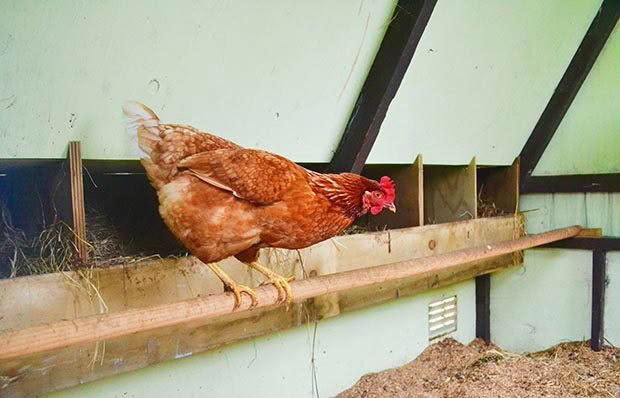7 ways to keep your hens happy this summer

Look after your chooks in the summer heat and avoid pesky red mite with these handy tips.
1. Chickens can’t sweat so they use cold water and shade to keep cool. If they get too hot, symptoms will include the bird panting and lying with its wings out in an attempt to use air flow to cool down. As a bird succumbs to heat stress, it will stop preening, go limp and not move, then die from overheating.
2. Ensure birds have access to cool, clean, fresh water in a clean container (birds drink more from clean water sources) and shade as water consumption can be 2-4 times more than normal. Have multiple water containers for birds lower in the pecking order.
3. If you don’t have trees or shrubs to give natural shade, use shadecloth or wood to create it. Keep water containers in shade too.
4. Birds that are going through a hot summer may lay less or stop entirely for a time but they’re not slacking off. Birds eat most of their feed in the morning, then digest it throughout the rest of the day. Digestion generates heat so the digestion process coupled with the increasing heat of the day makes the bird very hot. They then eat less, which affects their metabolism, reducing or stopping egg production.
5. If you get puddles, don’t let birds drink out of them as these are far more likely to carry bacteria and diseases. Fill in puddles, and create drainage to stop water from pooling. If you have leaking taps, get them fixed.
6. Check a couple of times a week for red mite in the coop and in nesting areas as hot weather will encourage a mite population explosion. The easiest way to spot red mite is to go into the coop at night with a torch and you should see them looking like coloured dust (grey, brown or red) on the perch and on your birds.
7. The best way to prevent red mites is to be proactive with your choice of treatment and to keep up treatment on a regular (at least once a week) basis throughout summer. Red mite will come out at night to feed but during the day they hide in cracks inside the coop, particularly where roosts meet walls and in joins in framing so whatever product you’re using needs to target these areas.
Love this story? Subscribe now!
 This article first appeared in NZ Lifestyle Block Magazine.
This article first appeared in NZ Lifestyle Block Magazine.
